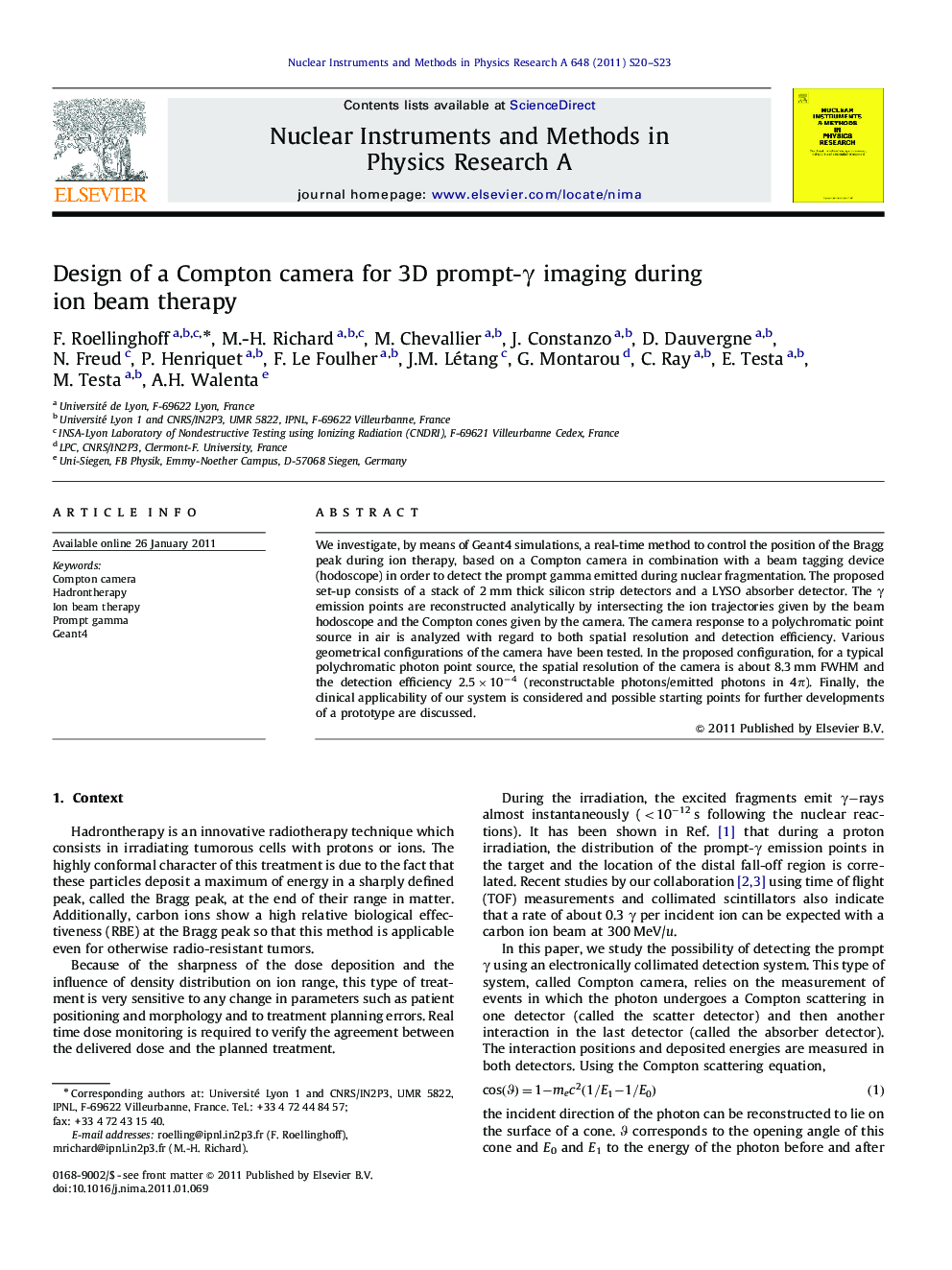| Article ID | Journal | Published Year | Pages | File Type |
|---|---|---|---|---|
| 1824767 | Nuclear Instruments and Methods in Physics Research Section A: Accelerators, Spectrometers, Detectors and Associated Equipment | 2011 | 4 Pages |
We investigate, by means of Geant4 simulations, a real-time method to control the position of the Bragg peak during ion therapy, based on a Compton camera in combination with a beam tagging device (hodoscope) in order to detect the prompt gamma emitted during nuclear fragmentation. The proposed set-up consists of a stack of 2 mm thick silicon strip detectors and a LYSO absorber detector. The γγ emission points are reconstructed analytically by intersecting the ion trajectories given by the beam hodoscope and the Compton cones given by the camera. The camera response to a polychromatic point source in air is analyzed with regard to both spatial resolution and detection efficiency. Various geometrical configurations of the camera have been tested. In the proposed configuration, for a typical polychromatic photon point source, the spatial resolution of the camera is about 8.3 mm FWHM and the detection efficiency 2.5×10−4 (reconstructable photons/emitted photons in 4π4π). Finally, the clinical applicability of our system is considered and possible starting points for further developments of a prototype are discussed.
